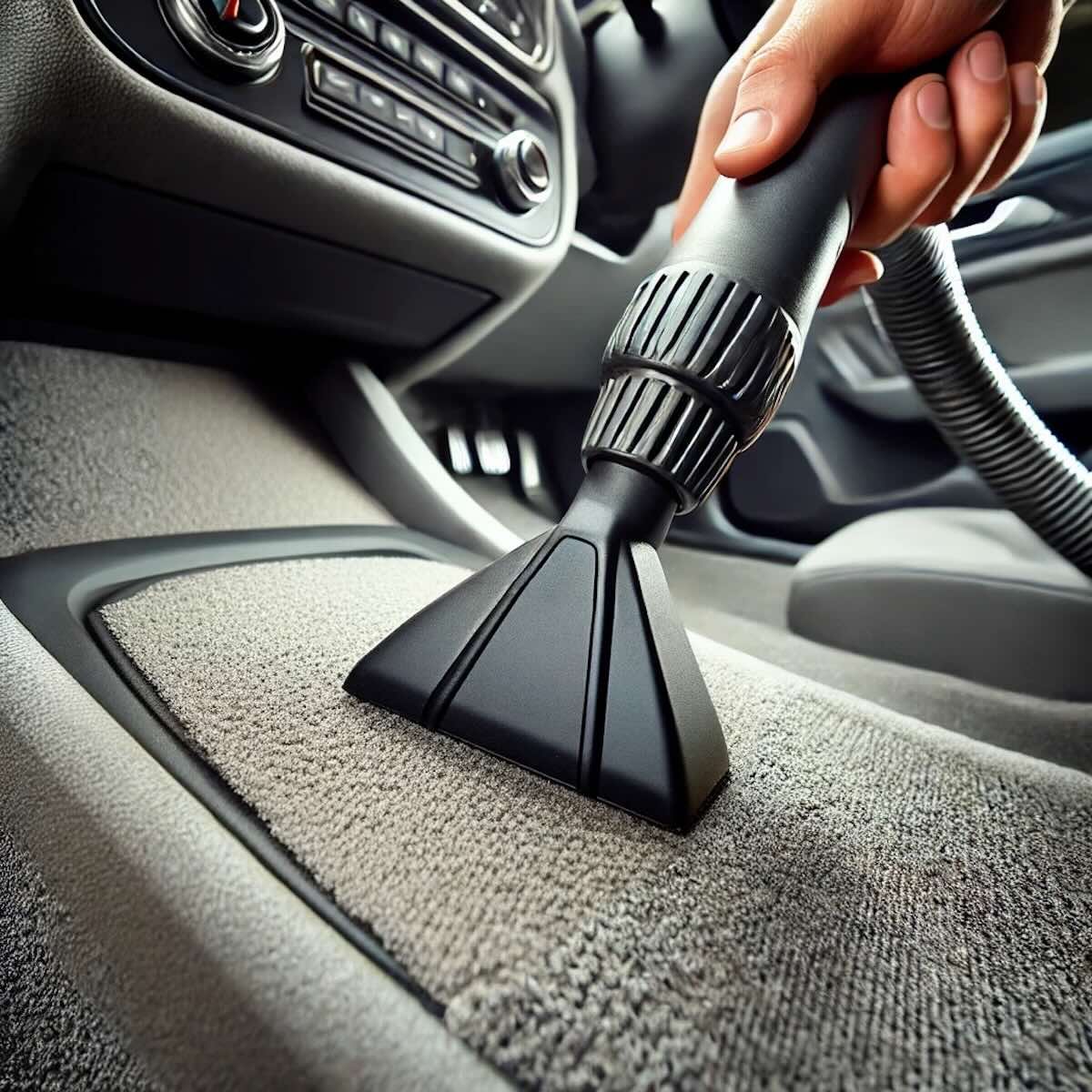What Do Car Detailers Use to Clean Floor Mats?
Car detailing is all about meticulous attention to detail, and floor mats are no exception. These often-overlooked parts of a vehicle take the brunt of dirt, mud, spills, and general wear and tear. To achieve a like-new look, professional car detailers rely on specific tools, products, and techniques. Here’s an inside look at how car detailers clean floor mats, leaving them spotless and fresh.
1. Vacuuming: The Essential First Step
A thorough vacuum is crucial to remove loose dirt, dust, and debris. Using a high-powered vacuum, detailers work across the mats, sometimes using attachments to reach crevices and ridges in all-weather mats. Vacuuming helps ensure that the cleaning products can penetrate the fibers of carpeted mats or thoroughly clean rubber surfaces.
2. Pre-Treatment for Stains
For carpeted mats, pre-treating stains is vital. Detailers often use specialized upholstery cleaners to target tough stains from coffee, grease, or mud. The stain remover is applied to the spot, left to sit for a few minutes, and then scrubbed with a brush to break up stubborn residue. This pre-treatment ensures the main cleaning solution can be more effective.
3. High-Pressure Air or Water for Deep Cleaning
For mats with heavy grime, detailers may turn to high-pressure air or water. A pressure washer is commonly used on rubber mats to blast away built-up dirt. It’s not typically recommended for carpeted mats, as the strong force can damage the fibers. High-pressure air can help blow out debris trapped in carpeted mats without harming the material.
4. Cleaning Solution Application
Detailers use different cleaning solutions depending on the mat type:
Carpeted Mats: They apply a carpet or upholstery cleaner, often with an enzyme-based formula to break down organic matter and neutralize odors. Detailers spray the cleaner evenly over the mat and allow it to sit to break down dirt.
Rubber/All-Weather Mats: They use a degreaser or an all-purpose cleaner, which effectively breaks down the oils, grime, and residues that accumulate on rubber mats. This cleaner is usually applied with a spray bottle for even coverage.
5. Brushing and Agitation
Using a stiff-bristled brush, detailers work the cleaning solution into the mats. For carpeted mats, this agitation helps lift dirt from the fibers, ensuring a deeper clean. Rubber mats might require a firmer hand to scrub off caked-on dirt and grime. Some detailers use a drill brush attachment for particularly stubborn stains on carpeted mats, as the rotating action can dig deeper into the fibers without causing damage.
6. Extraction for Carpeted Mats
To remove the cleaning solution and any remaining dirt, many detailers use a hot water extractor on carpeted mats. This machine sprays hot water into the mat and then extracts it along with the dirt. Extraction provides a deep clean and helps reduce drying time by removing excess moisture. For at-home detailing, a wet-dry vacuum can achieve similar results.
7. Rinsing Rubber Mats
For rubber and all-weather mats, rinsing off the cleaning solution with water is essential. Detailers typically use a hose or low-pressure washer to thoroughly rinse, ensuring all soap and cleaner residues are removed. Leftover residue can create a slippery surface, so rinsing is essential for both safety and cleanliness.
8. Drying the Mats
After cleaning, it’s important to dry the mats properly. Detailers use several methods, such as:
Air Drying: Leaving the mats in a well-ventilated area to air dry. Rubber mats can dry quickly outdoors, while carpeted mats might need more time.
Drying Machines: For faster results, detailers might use a drying machine or fans on carpeted mats to speed up drying.
Microfiber Towels: For minor dampness, microfiber towels can be used to blot carpeted mats.
9. Applying Protectants (For Rubber Mats)
To maintain and protect rubber mats, some detailers apply a non-slick protectant once the mats are dry. This product helps keep the mats looking newer for longer by repelling dirt and resisting fading from sun exposure. A high-quality protectant also reduces the chance of rubber degradation over time.
10. Reinstalling Clean Mats
Once completely dry, the mats are placed back into the vehicle. Cleaned and refreshed, they add a final touch to the interior detailing, making the whole car look well-maintained.
Why Professional Detailers Make a Difference
While it’s possible to clean mats at home, professional detailers bring specialized equipment, expertise, and products to the process. A high-quality extractor, stain removers, and custom cleaners for different mat types ensure that the mats are not only clean but also protected from future wear and tear.
Final Thoughts
Cleaning floor mats is one of the most effective ways to maintain the cleanliness and appeal of a car’s interior. From high-powered vacuums to protectants, professional car detailers use a wide range of tools and techniques to tackle the grime and keep mats in top condition. For those seeking to prolong the life of their mats and achieve that “new car” feel, professional detailing is a worthwhile investment.

